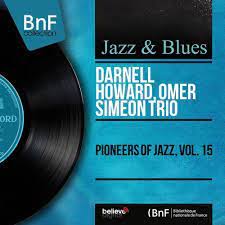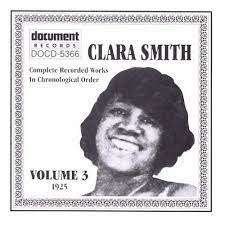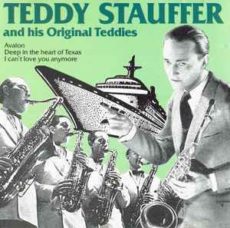
Daily Dose Of Jazz…
Samuel “Savoirfaire” Williams was born on September 22, 1973 in Chicago, Illinois. At the age of three he began playing violin at his parents’ church and two years later joined a group of child prodigies under the tutelage of Suzuki Violin instructor, Betty Haag. His first performance was at Chicago’s Orchestra Hall during a public television broadcast which became an annual event spanning more than 35 years.
He attended the Merit School of Music in Chicago, studying music theory while participating in youth orchestras including the City Youth Symphony, Chicago Youth Symphony Orchestra, Protégé, All-City and All-State. He took private lessons from Afro-Panamanian musician Joseph Williams when he was 16. During this time he played lead for the City Youth String Ensemble’s viola section, then received a scholarship at Interlochen where he sat in with vibraphonist Milt Jackson.
Meeting and performing with Wynton Marsalis while working at the Chicago Symphony Center, Williams continued his studies and busked on the streets to pay for violin lessons. During one of his street performances, guitarist Kenny Burrell observed his skill and invited him to collaborate with himself, Willie Pickens and Larry Gray on a Bebop performance at Chicago’s Jazz Showcase.
In 2000, he was voted into the Chicago Chapter of the Association for the Advancement of Creative Musicians (AACM), which earned him the moniker “Savoirfaire.” That same year, he began an apprenticeship with luthier Martin Sheridan to learn the art of violin-making, later owning the violin shop and managing it for three years.
After self-releasing three live albums, Bob Koester discovered his work and in 2004 Delmark Records produced the internationally acclaimed release Running Out of Time. Over the years, Savoirfaire has been invited to record with a plethora of artists in various genres and at international Jazz festivals.
In 2015, Williams founded the Chicago Gypsy Project with guitarist Dave Miller and bassist Charlie Kirchen. He continues to perform with his group Savoirfaire Jazz Quartet as well as busking on the streets, and in various venues throughout Chicago.
More Posts: bandleader,history,instrumental,jazz,music,violin

REGINA CARTER
Grammy-nominated artist Regina Carter explores the power of music through the voice of the violin in a wide range of genres—including jazz, R&B, Latin, classical, blues, country, pop, and African. Join us for her much-anticipated return to Jazz St. Louis!
Valet Parking ~ $10.00 prepaid
Valet parking is available for all Jazz St. Louis performances. Discounted $10 valet parking may be purchased when ordering your tickets. Please make sure to select the correct date and time when adding parking to your cart with your tickets before purchasing.
Performances:
September 21 ~ 7:30pm
September 22 ~ 11:00am | 7:30pm
September 23 ~ 7:30 | 9:30
September 24 ~ 7:30 | 9:30
September 25 ~ 6:30
More Posts: adventure,album,club,festival,genius,jazz,museum,music,preserving,restaurant,travel,violin

Daily Dose Of Jazz…
Darnell Howard was born on July 25, 1895 in Chicago, Illinois and began playing violin at age seven, picking up clarinet and saxophone later in his youth. He began playing professionally with John H. Wickcliffe’s Ginger Orchestra from 1913 to 1916.
Moving to New York City in 1917, Darnell played and recorded as a violinist with W. C. Handy, then headed back to Chicago, where he led his own band, played with Charlie Elgar before joining James P. Johnson’s Plantation Days Band, which toured London, England in 1923. The following year he toured Europe again as a member of the Singing Syncopators that also played in Shanghai later in the decade.
His Chicago years saw him playing with Carroll Dickerson, King Oliver, and Erskine Tate, Jerome Carrington, Dave Peyton and Earl Hines. He led a quartet in 1928, but his jazz violin is featured on the Hines band’s February, 1933 recording of the Earl Hines/Jimmy Mundy swing composition Cavernism.
In the late 1930s, Howard was freelancing into the Forties and playing with Fletcher Henderson and Coleman Hawkins, and putting together another band in Chicago from 1943 to 1945. He would go on to play with Kid Ory in California for part of 1945, then returned to Chicago and back again in 1948 with Muggsy Spanier until 1953. His only recordings as a leader were done while he worked with Bob Scobey in 1950, amounting to only four sides.
Through the 1950s he played with Jimmy Archey, rejoined Earl Hines to play Dixieland in San Francisco, California and recorded with Don Ewell on his 1956–1957 albums. Sometime after 1962 Darnell suffered a prolonged illness and after recuperating he played with Elmer Snowden, Burt Bales, and his own groups. His final tour in 1966, was in Europe as a member of the New Orleans All-Stars, then he fell ill again. Clarinetist, violinist and alto saxophonist Darnell Howard transitioned on September 2, 1966 in San Francisco.
More Posts: bandleader,clarinet,history,instrumental,jazz,music,saxophone,violin

Daily Dose Of Jazz…
Leon Alexander Anthony Abbey was born in Minneapolis, Minnesota on May 7, 1900 to Luther James Robert Abbey and Eva Lee Alexander. He started his career in 1920 as a classical violinist with the orchestra of J. Rosamond Johnson. Five years later, he recorded with Clara Smith on If You Only Knowed and You Better Keep The Home Fires Burning.
By 1926, Leon was leading the Savoy Bearcats and toured with the band the next year in Argentina, Brazil, and Uruguay. For a decade, he toured throughout Europe and performed in India two times.
Abbey led a band with blues singer Ethel Waters. In Chicago, Illinois he led a trio until 1964. His sideman during his career included Fletcher Allen, Emile Christian, Bill Coleman, Peter DuConge, and Crickett Smith. He recorded Jazz and Hot Dance in Denmark as a leader in 1938 on Harmony Records in Copenhagen, Denmark. It was also issued under the name Whoa Babe.
Violinist and bandleader Leon Abbey transitioned in September 1975.
More Posts: bandleader,history,instrumental,jazz,music,violin

Daily Dose Of Jazz…
Ernst Heinrich “Teddy” Stauffer was born May 2, 1909 In Murten, Fribourg, Switzerland He was dubbed Germany’s “Swing-King” of the 1930s. He formed the band known as the Teddies, which is also billed as the Original Teddies or the International Teddies, which continued after he left in 1941.
Annual trips to the Swiss cities of St. Moritz, Arosa and also a guest appearance in London, England were responsible for the international fame of the Teddies band. Until 1939, he appeared with his Original Teddies-Band especially in Berlin and Hamburg, Germany. He enjoyed his popularity at the 1936 Olympics, had hits with Goody~Goody, and turned Horst Wessel Lied, the National Socialist’s anthem, into a jazz number in 1938. With his jazzy swing music, however, Stauffer increasingly got in trouble with the Reichsmusikkammer, a Nazi institution that promoted “good German music” which was composed by Aryans and seen as consistent with Nazi ideals.
Returning to Switzerland in 1939, he eventually emigrated to the United States and then to Mexico. His reputation as a playboy and a well~known womanizer who was married to Hedy Lamar, did not sway him from also having affairs with Rita Hayworth and Barbara Hutton.
Violinist, saxophonist and bandleader Teddy Stauffer who was also an actor, nightclub owner, and restaurateur transitioned on August 27, 1991 in Acapulco, Mexico at the age of 82.
More Posts: bandleader,club owner,history,hotelier,instrumental,jazz,music,saxophone,violin




